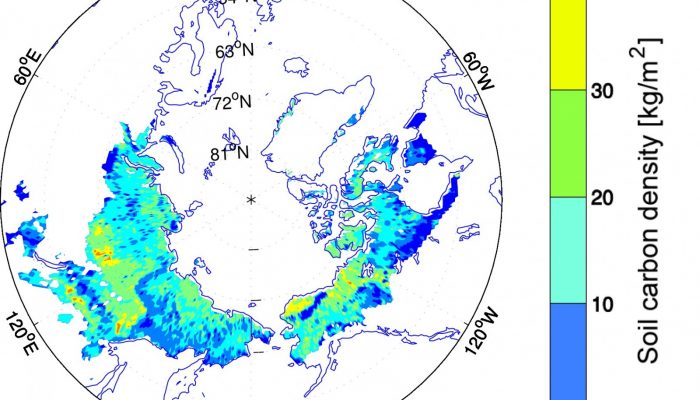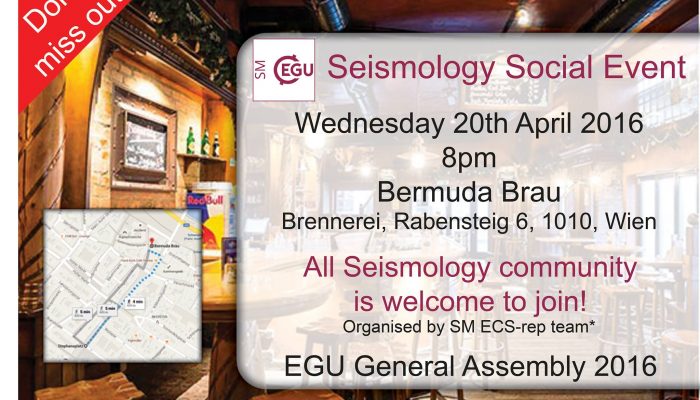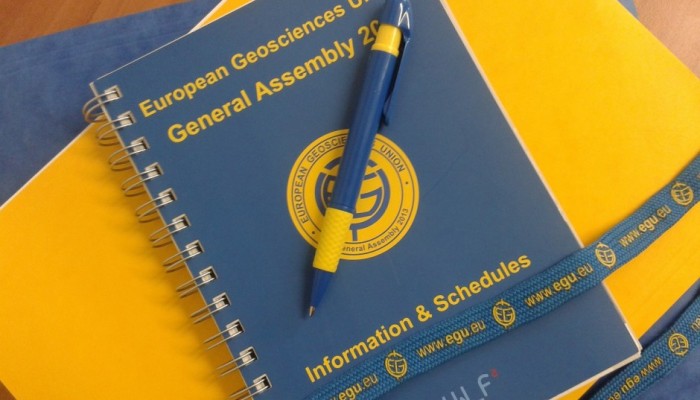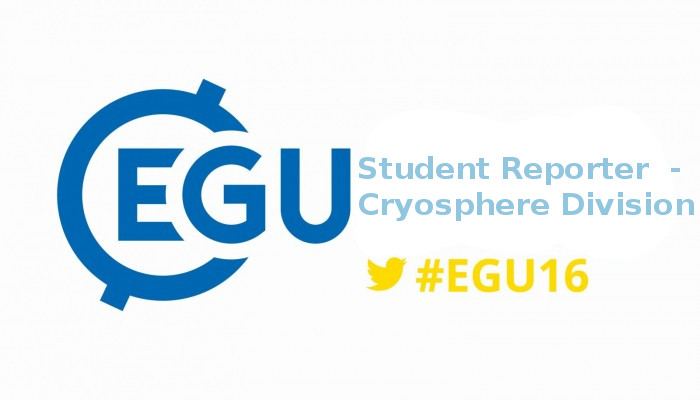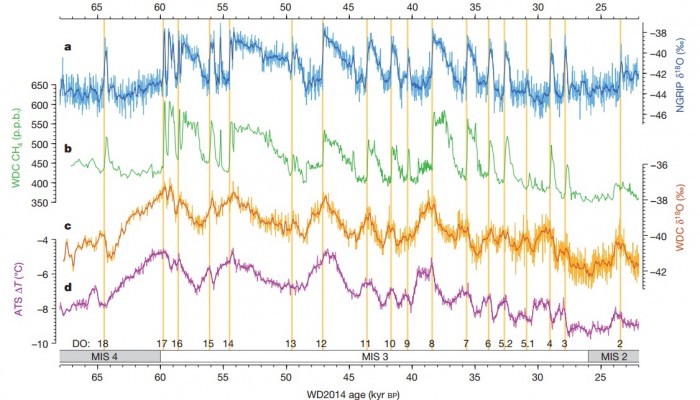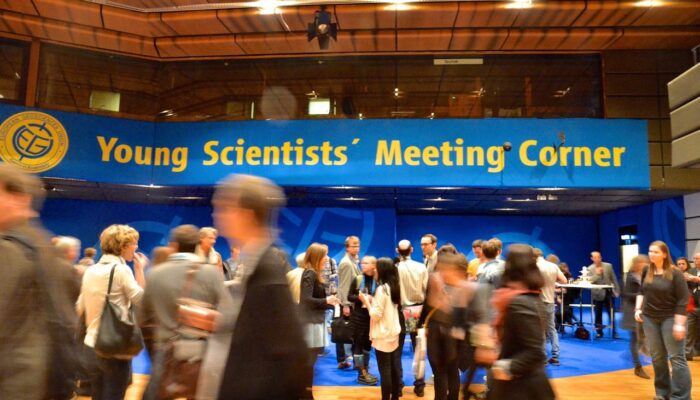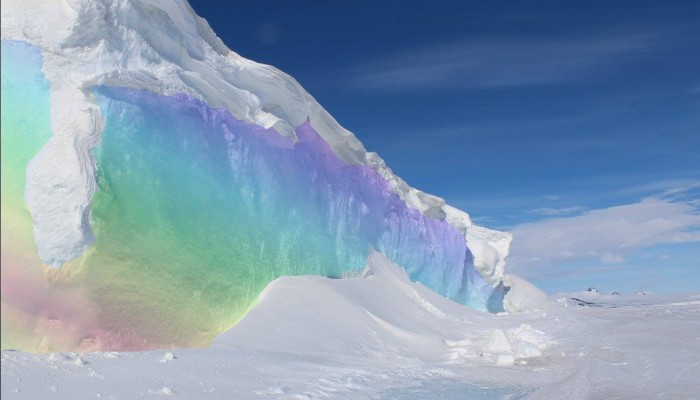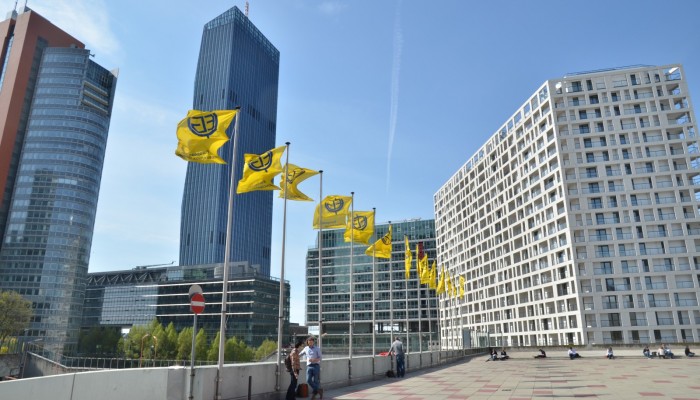Ice sheets and glaciers are very visible and much photographed (e.g. here) elements of the Cryosphere but what about the vast, invisible and buried parts? Around a quarter of the land in the Northern hemisphere remains frozen year round, making up a hugely important part of the cryosphere known as permafrost. Permafrost largely exists at high latitudes (e.g. Siberia and the Canadian Arctic) and t ...[Read More]
Seismology
Seismology social evening at EGU
Wondering how to spend your Wednesday night in Wien during the General Assembly? Wishing to network with your peers, both Early Career Scientists (ECS) and more experiences seismologists, in a informal setting? Then, come along to the Social Event of the Seismology Division organised by the ECS-representatives team! See you on Wednesday night, from 8pm, at Bermuda Brau!
Biogeosciences
General assembly 2016: our session picks
Whether you’re an experienced attendee of the EGU GA, or this is your first time there are always things to look out for, it is always worth attending your division’s division meeting, one of the great debates, and keep an eye out for short courses which may be of interest to you. Here are the recommendations from the Biogeosciences Blogging team: The BG division meeting is Thursday from 12:15-13: ...[Read More]
Cryospheric Sciences
The art of surviving a week of conferencing
Hello everyone! My name is Kathi Unglert and I’m a PhD student in volcanology at the University of British Columbia in Vancouver. I will be reporting for the Cryospheric Sciences blog during the upcoming EGU General Assembly as part of the “Student Reporter Programme”. With the meeting only a few days away, I thought I’d put together a quick guide how to make the most out of a whole week of confer ...[Read More]
Geomorphology
EGU Workshop: Digital Terrain Analysis of Anthropogenic Landscapes
EGU is about to start and besides many presentation and meeting Paolo Tarolli, Tobias Heckmann and Wolfgang Schwanghart offer a hands on workshop on Digital Terrain Analysis of Anthropogenic Landscapes (13:30–15:00 in Room L4/5). Please see below some information on the course. – written by Paolo Tarolli (University of Padova) – Humans are among the most prominent geomorphic agents, r ...[Read More]
Cryospheric Sciences
Image of the Week: The Bipolar Seesaw
The colourful graphs above show how the climate changed in the period from 65 to 25 thousand years ago when Earth was experiencing an ice age. A wealth of information on the dynamics of our climate is embedded in the curves, especially how the northern and southern hemisphere interact, and how fast climate can change. The figure represents thousands and thousands of hours of work by scientists, te ...[Read More]
Cryospheric Sciences
What to do at EGU — a guide for early-career scientists
Are you going to the EGU General Assembly in Vienna next week? Check out these events for early career scientists. To remind you when and where all these nice events and activities take place, you can directly view and import them in your electronic calendar (Isn’t it wonderful?! :-)) Social event for Early Career Cryosphere Scientists! If you cannot make it to anything else; make it to our ...[Read More]
Seismology
Some reminders for EGU-GA 2016
With only 10 days left for the kick off of the annual European Geosciences Union General Assembly (2016), here is a quick-list to go through in time for EGU. Please note that the Austria Center Vienna has implemented a new system of room numbers and level names. The major changes can be found here. First, read this page for information concerning activities for Early Career Scientists at the GA: h ...[Read More]
Cryospheric Sciences
Image Of The Week – Do My Ice Deceive Me?
A few weeks ago, we focussed our image of the week on very particular parts of Antarctica, which display blue ice at the surface. Today we would like to put the spotlight on an even more extreme chromatic phenomenon : the Fyndið ísjaki Brandari (should be pronounced “/fɪːntɪð/ˈiːsjacɪ /ˈprantaːrɪ/“, even though a bit of phonetics never hurt anyone, for the sake of simplicity this phenomenon ...[Read More]
Geomorphology
EGU 2016 events
Award lectures The Geomorphology Division awards the Ralph Alger Bagnold medal to individuals in recognition of their outstanding scientific contribution to the study of geomorphology, and also awards an Outstanding Young Scientists award to recognise remarkable scientific achievements in the field of geomorphology by an early-career scientist. This year’s winners are Niels Hovius, recipient of th ...[Read More]

